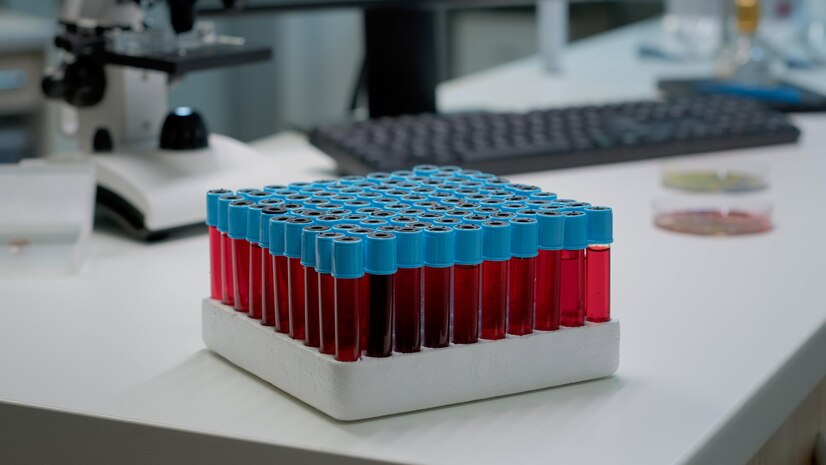Most biotechnologists face the dilemma of choosing between magnetic protein A beads and traditional methods offered by lytic solutions when purifying proteins. In this informative comparison, you will explore the efficiency, cost-effectiveness, and ease of use of these two popular protein purification techniques. By understanding the advantages and limitations of each method, you can make an informed decision that best suits your research needs.
Overview of Traditional Methods Provided by Lytic Solutions
Historical Background of Lytic Solutions
Provided by Lytic Solutions, traditional methods have a rich historical background in the field of protein purification and analysis. Over the years, these methods have been refined and optimized to provide researchers with reliable and efficient tools for their experiments. Lytic Solutions has been a pioneer in developing innovative solutions that have stood the test of time.
Mechanisms of Traditional Methods
Methods offered by Lytic Solutions utilize well-established biochemical principles to isolate and purify proteins from complex mixtures. These methods often involve the use of specific reagents and protocols that have been fine-tuned to yield high purity and yield. By understanding the underlying mechanisms of these traditional methods, you can optimize your experimental workflow and achieve accurate and reproducible results.
Traditional methods provided by Lytic Solutions rely on the principles of affinity chromatography, ion exchange, and size exclusion to separate proteins based on their unique properties. By exploiting differences in charge, size, and binding affinity, these methods can effectively isolate target proteins from a variety of sources, making them versatile tools for protein analysis.
Comparing Magnetic Protein A Beads vs. Traditional Methods Provided By Lytic Solutions
Overwhelmed by the array of protein purification methods available? Let’s break it down for you. Today, we’re delving into biotechnology to compare the efficacy of using Magnetic Protein A Beads versus the traditional techniques provided by Lytic Solutions. By understanding the advantages and drawbacks of each method, you can make an informed decision on which approach best suits your research needs. So, grab a coffee and get ready to uncover the science behind protein purification!
Comparison of Binding Efficiencies
Binding Capacity of Magnetic Protein A Beads
With the Magnetic Protein A Beads, the binding capacity is significantly higher compared to traditional methods. These beads are coated with recombinant Protein A, allowing for specific and efficient binding to immunoglobulins such as IgG. The high binding capacity ensures maximum capture of the target protein, leading to improved purification outcomes.
Binding Capacity of Traditional Methods
Magnetic beads can be more efficient than traditional methods because they offer higher surface area-to-volume ratios, providing more binding sites for target proteins. This allows for greater capture efficiency and higher yields, making the purification process more robust and reproducible.
Traditional methods, on the other hand, may have limitations in terms of binding capacity due to the use of bulk matrices such as agarose beads or resins. These matrices have lower surface area for binding, resulting in lower capture efficiency and potentially compromising purification outcomes.
Comparison of Binding Kinetics
An important aspect to consider when comparing binding efficiencies is the kinetics of the binding reaction. The Magnetic Protein A Beads offer rapid binding kinetics, enabling quick and efficient capture of the target protein. This rapid binding is crucial for reducing purification time and increasing overall productivity.
It is crucial to understand that the binding kinetics of traditional methods may vary depending on the type of matrix used. While some traditional methods may provide acceptable binding kinetics, they often lack the speed and efficiency offered by Magnetic Protein A Beads.
Comparison of Purification Efficiencies
Purity of Eluted Proteins with Magnetic Protein A Beads
To evaluate purity, you should consider that the eluted proteins with Magnetic Protein A Beads exhibit high purity levels. These beads are designed to specifically bind target proteins, ensuring minimal contaminants are present in the eluted fraction.
Using Magnetic Protein A Beads for purification can result in a highly pure protein sample with low levels of impurities, providing you with a reliable and efficient purification method.
Purity of Eluted Proteins with Traditional Methods
To assess purity, you can note that traditional methods may introduce more contaminants into the eluted protein sample compared to Magnetic Protein A Beads. These methods may result in lower purity levels and require additional purification steps to achieve the desired purity.
When utilizing traditional methods, such as lytic solutions, it is crucial to carefully consider the purity of the eluted proteins and take necessary precautions to minimize contamination risks.
Comparison of Contaminant Removal
|
Eluted Proteins with Magnetic Protein A Beads |
Eluted Proteins with Traditional Methods |
|
Magnetic Protein A Beads offer high specificity and affinity for target proteins, resulting in efficient contaminant removal |
Traditional methods may have lower specificity, leading to higher levels of contaminants in the eluted proteins |
When comparing the two methods for contaminant removal, you should consider that Magnetic Protein A Beads provide a superior option for efficiently removing contaminants from your protein sample. These beads can selectively bind target proteins, minimizing the presence of unwanted impurities in the eluted fraction.
Protein Purity
With Magnetic Protein A Beads, you can achieve higher protein purity levels compared to traditional purification methods. The specificity and efficiency of these beads contribute to obtaining a more pure protein sample for your research or downstream applications.
Comparison of Operational Convenience
Ease of Use of Magnetic Protein A Beads
Protein: When using magnetic protein A beads, the process is streamlined and efficient. The magnetic beads allow for easy manipulation and separation, reducing the risk of losing samples or compromising results. With simple magnetic separation steps, you can easily isolate your target proteins without the need for extensive centrifugation or filtration.
Ease of Use of Traditional Methods
Operational: Traditional methods provided by lytic solutions often require multiple steps, including centrifugation and filtration, to isolate target proteins. This can be time-consuming and labor-intensive, increasing the risk of errors and contamination. The use of hazardous chemicals in some traditional methods also poses safety concerns for lab personnel.
Ease: While traditional methods may be effective in protein isolation, they can be cumbersome and require experienced hands to ensure successful results. The multiple steps involved in traditional methods can lead to increased chances of error and contamination.
Comparison of Time and Labor Requirements
|
Protein A Beads: |
Traditional Methods |
|
Efficient and streamlined process |
Time-consuming and labor-intensive |
Another advantage of using magnetic protein A beads is the reduction in time and labor required for protein isolation. The simple and fast magnetic separation process enables you to isolate your target proteins in a fraction of the time compared to traditional methods. This not only saves you time but also reduces the risk of human error during the isolation process.
Cost-Effectiveness Analysis
Cost of Magnetic Protein A Beads
Many factors contribute to the cost-effectiveness of using Magnetic Protein A Beads for protein purification. The initial investment in magnetic beads may seem higher compared to traditional methods, but their reusability and efficiency make them a cost-effective choice in the long run. With proper handling and storage, Magnetic Protein A Beads can be used for multiple purification rounds, reducing overall costs per experiment.
Cost of Traditional Methods
Cost is a significant consideration when evaluating traditional purification methods provided by Lytic Solutions. The expenses associated with purchasing and disposing of columns, filters, and other consumables can add up quickly. Additionally, the time and labor required for manual purification processes can impact productivity and increase overall expenses. Cost comparison between magnetic beads and traditional methods plays a crucial role in decision-making. Magnetic Protein A Beads offer a higher upfront cost but prove to be more cost-effective over time due to their reusability and efficiency. On the other hand, traditional purification methods may appear more economical initially, but when considering long-term expenses and the value of saved time, the advantages of magnetic beads become evident.
Comparison of Cost-Benefit Ratios
|
Magnetic Protein A Beads |
Traditional Methods |
|
Higher initial cost |
Lower initial cost |
|
Lower long-term expenses due to reusability |
Higher ongoing consumable costs |
Magnetic Protein A Beads offer a higher upfront cost but prove to be more cost-effective over time due to their reusability and efficiency. Traditional methods may seem more budget-friendly initially, but when considering the long-term benefits of magnetic beads, they emerge as the more cost-effective choice for protein purification processes.
Summing up
Following this exploration of comparing Magnetic Protein A beads with traditional methods provided by lytic solutions, you may have gained a deeper understanding of the advantages and limitations of each technique. Magnetic Protein A beads offer a quicker and more efficient way to isolate target proteins, while traditional methods may provide a more cost-effective alternative in certain situations.
Ultimately, the choice between these two methods will depend on the specific requirements of your research or project. By being aware of the differences between Magnetic Protein A beads and traditional lytic solutions, you can make an informed decision that best suits your needs and goals in protein isolation.




